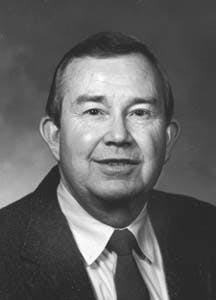Specifying fracture toughness ranks high in line pipe selection
John F. Kiefner, Willard A. Maxey
Kiefner & Associates
Worthington, Ohio
Selecting line pipe with adequate fracture toughness is an important consideration for all types of line pipe including ERW, seamless, and DSAW pipe.
The selection process requires a knowledge of the characteristics of fracture behavior which relate to toughness, the levels required for various line pipe applications, the factors which influence toughness, the means available in API Specifications 5L to achieve adequate toughness, and some ways in which a pipeline operator can obtain pipe with adequate toughness for various applications.
Those using this information include pipeline designers and engineers, purchasing agents, pipe mill inspectors, and pipeline compliance and risk assessment specialists.
What follows is meant to provide guidance on fracture toughness to purchasers of line pipe materials. It does not take the place of the rigorous analysis that may be necessary in many cases.
Also, the suggested alternatives when impact data are not available are not nearly as dependable as impact tests themselves. Whenever possible, it is both prudent and desirable to know the fracture behavior of a line pipe material and to subject it to service conditions which will be unlikely to induce it to behave in a brittle manner.
Fractures in line pipe
Ductile Toughness Scale (29984 bytes)
Most line pipe materials are made from carbon-manganese steels or microalloyed steels. These materials exhibit two extremely different fracture behaviors depending on their inherent properties and the temperatures at which they fracture.1
At low temperatures, these materials exhibit brittleness; that is, they may undergo catastrophic fracture and fragmentation if made to fail. If the temperature is less than the fracture-propagation transition temperature (FPTT), the material exhibits extremely low resistance to crack propagation and stretches or deforms little upon fracturing.
In contrast, if its temperature is greater than its FPTT, the material becomes ductile. This means that it exhibits appreciable resistance to crack propagation, stretches or deforms significantly before failing, and tolerates relatively larger flaws without rupturing. The transition is shown in Fig. 1 (82553 bytes) as characterized by two types of impact specimens (Charpy V-notch specimens and drop-weight tear tests). Both absorbed energy and shear area change dramatically over the transition temperature range.
The temperature range over which the fracture mode changes from brittle to ductile takes place in a full-scale pipe or DWTT specimen is relatively narrow (10-20 F.), although as measured in small scale tests (e.g., Charpy V-notch impact tests), the transition temperature range may be as wide as 150 F.
The transition behavior in terms of fracture appearance is shown in Fig. 2 (44555 bytes) for a typical line pipe material.
This definition of fracture transition behavior (FPTT) applies to a propagating fracture in which the dynamic nature of the advancing crack imposes the most severe conditions for fracture resistance.
Line pipe materials also exhibit a transition in fracture behavior under relatively static stress.1 The latter occurs at the fracture initiation transition temperature (FITT) which is usually lower than the FPTT.
At temperatures less than the FITT, the material is prone to exhibit brittle fracture initiation in the presence of relatively small defects. Fig. 3 (57051 bytes) illustrates the difference between FITT and FPTT. The margin of temperature between the two is not necessarily fixed but may depend on the type of defect and the nature of the imposed stress.
In any case, it is highly desirable to avoid exposing a line pipe material to service conditions involving temperatures less than its FITT. And because the FITT is relatively difficult to determine and prone to vary with the type of defect, it is usually desirable to use a line pipe material with an FPTT less than the lowest anticipated operating temperature.
Even when ductile behavior is assured, the range of ductile fracture resistance exhibited by line pipe materials is broad (an order of magnitude). The level of ductile fracture resistance required depends on the nature of the product being transported because the nature and speed of decompression relative to the crack velocity determines whether the crack-driving force remains high enough to drive the fracture.1 2
The requirement is lowest for non highly volatile liquids and highest for materials transported in dense phase at extremely high pressures (such as CO2).
The scale of ductile toughness required is ordered as shown in the accompanying box. In the case of non highly volatile liquids, both ductile and brittle fractures tend to arrest spontaneously at a distance of a few pipe diameters from the initiating flaw because the decompression velocity easily outruns the crack velocity.
This is not to say that brittle fracture should be an accepted mode of behavior for pipelines transporting non highly volatile liquids. Brittle behavior entails the risk of fracture initiation from relatively small flaws at stress levels within the operating range.
This is not a condition which an operator should accept when a new pipeline is being constructed.
In general, predicting the appropriate level of ductile fracture resistance involves accounting for the complex interaction of fluid properties, operating conditions, and material properties. The case for natural gas that consists mostly of methane with very few if any heavy hydrocarbons reduces to the following simple equation.3 4
Rmax = 0.0072 So2 (Rt)1/3 (1)
where:
Rmax = Required level of absorbed energy for a two thirds-size Charpy V-notch specimen to ensure arrest of a ductile fracture, ft-lb So = Maximum operating hoop stress level as determined by the Barlow formula using the maximum operating pressure, ksi
R = 1/2 OD of the pipe, in.
t = Pipe W.T., in.
For all types of service, including that of non highly volatile liquids, it is suggested that a minimum upper shelf energy equal to Rmax be specified.
When this level of toughness exists, one can expect that the material will have optimum or at least near-optimum (80-100%) resistance to fracture initiation. (That is, the size of flaw required to cause a leak or a rupture will not be appreciably larger even if a higher level of toughness is obtained.)
Influences on temperature
The most important factor with respect to transition temperature is grain size. The smaller the ferrite grains, everything else being equal, the lower will be the transition temperature.
Grain size is controlled by chemical content and thermo-mechanical treatment during hot forming of the pipe in the case of seamless pipe or of the skelp in the case of ERW or DSAW pipe.
Grain size can be reduced by microalloying additions of columbium, vanadium, or titanium, and by lowering the finishing temperature for final hot-working.
Lowering carbon and phosphorus contents also helps to lower transition temperature. It is now possible to obtain relatively low carbon skelp (C Fig. 4 (53447 bytes).
Notice how the DWTT (drop weight tear test) specimens of increasing thickness give successively higher transition temperatures. This is not to say that thicker pipe is necessarily undesirable, only that the requirements to get a certain transition temperature are harder to meet.
Also, the principle illustrated in A HREF="http://images.pennwellnet.com/ogj/images/ogj/93416402.gif"Fig. 4 (53447 bytes) must be kept in mind when less-than-full-thickness specimens are used to determine transition temperature for a given material. The empirical relationship2 shown in Fig. 5 (92153 bytes) can be used to correct the transition temperature determined by means of a subsized Charpy V-notch specimen (Tc) to obtain the true full-thickness transition temperature (Tp).
Influences on absorbed energy
The most important factor affecting the upper shelf energy illustrated in Fig. 1 (82553 bytes) is the nonmetallic inclusion content, primarily manganese-sulfide stringers.
Such stringers detract from the toughness of the steel because they are brittle and have negligible strength. They tend to form elongated particles when the pipe material is hot-worked because they are soft and ductile at the normal working temperatures of steel.
Even though they are generally oriented parallel to the surfaces of the hot-worked product, they limit the ability of the material to deform through-the-thickness and hence they reduce the tolerance for deformation in the presence of defects. And, because they become reoriented perpendicularly to the hoop-stress direction during upsetting of material next to the bond line of an ERW seam, they can become a source of hook cracks. Sulfur is the primary culprit in the formation of manganese sulfide stringers. Either tying up sulfur in other compounds or eliminating it as much as possible is desirable. The former approach is attempted by adding calcium or rare earth elements which form sulfides that remain spherical during hot rolling. The latter involves desulfurization during steel making and is both the most expensive and most effective method.
It is possible to obtain steels with less than 0.001 wt % sulfur, and it is certainly desirable to have the sulfur content limited to less than 0.01%.
Other nonmetallic elements such as oxygen can form compounds detrimental to toughness. Generally, most steels currently made for line pipe are fully killed; that is, they are deoxidized as much as possible in steel making by additions of aluminum or silicon.
Steels with minimal nonmetallic elements such as sulfur and oxygen are relatively clean steels; those with high contents of nonmetallic elements are termed dirty. Clean steels are desirable for optimum toughness and especially as skelp for ERW pipe.
Supplementing API 5L
Supplementary Requirement 5 (SR5) to API Specification 5L provides a means for obtaining adequate fracture toughness for line pipe of 4.5-in. OD or larger when pipe is being ordered from a manufacturer.
SR5 is based on Charpy V-notch tests oriented transversely to the axis of the pipe. The purchaser can specify a temperature (50 F. or lower) at or greater than which the material must exhibit mostly shear fracture (SR5A, Shear Area).
The purchaser can also specify a minimum level of absorbed energy (SR5B Absorbed Energy). The energy level can be established by means of Equation 1.
Two possibly restrictive features of SR5, however, are that flattening of the pipe wall is not permitted and it is limited to pipe sizes and thicknesses from which a one half-size specimen may be secured. As can be easily ascertained, these restrictions prevent SR5 from being used for orders involving small-diameter, thin-wall pipe. For 658-in. OD pipe, the minimum wall thickness needed to obtain a transverse one half-size Charpy V-notch specimen is 0.378 in. For 16-in. OD pipe, it is 0.271 in.
It is always possible that a purchaser and a manufacturer can agree on a nonstandard specimen to accommodate pipe sizes which do not permit the extraction of specimens acceptable under SR5.
For example, one third-size specimens have been used on occasion. This would permit specimens to be extracted from 16-in. OD x 0.188-in. W.T. pipe.
Alternatively, cold-flattened transverse Charpy specimens can be used. Research has shown that the latter gives valid results.5 With flattening, it is possible to obtain nearly one-half size specimens from 0.188-in. W.T. pipe of any diameter and greater than one-third size specimens from 0.156-in. W.T. pipe.
It is also possible to obtain longitudinally oriented specimens without flattening. The latter, however, are known to exhibit much higher absorbed energies than transverse specimens of the same material. Longitudinal specimens are therefore not recommended as means of measuring fracture resistance in line pipe.
Alternatives
Clearly there will be occasions when a purchaser of the pipe may be unable to obtain pipe certified to meet SR5 A or SR5 A and B.
The occasions will arise with pipe sizes which are too small to meet the thickness requirement for one-half-size specimens and pipe orders which are too small to be obtained through a specific manufacturing run. Suggested alternatives are as follows:
When the quantity of pipe to be obtained is enough to interest a pipe manufacturer, the purchaser may be able to negotiate Charpy V-notch tests of subsize specimens less than one-half size.
These are less reliable than larger specimens, especially with respect to absorbed energy. In fact, it is desirable to test the largest size that can be extracted from a given material.
The smaller, sub-sized specimens can be used, however, to ensure that the transition temperature is not unreasonably high and that the shelf energy is not unreasonably low.
Even if the manufacturer does not agree to use such specimens to certify the order, they can be done for information only; that is, the buyer has no right to reject. In this case, the purchaser obtains the information on transition temperature and shelf energy but cannot reject any heats of steel if they do not meet expectations.
It may be possible to use heats which do not meet expectations for less critical applications. For example, materials with transition temperatures greater than the lowest service levels could be reserved for areas with operating temperatures not involving the lowest service levels.
Heats exhibiting undesirably low energy levels could be used for low-stress situations.
If it is not possible to get any toughness tests from a manufacturer, it might be possible to achieve the desired results by limiting carbon and sulfur contents. If the carbon level can be held to less than 0.10% and the sulfur level can be held to less than 0.01%, the chances are reasonably good that the material will have a low transition temperature and a reasonable shelf energy. Finally, if the manufacturer refuses to accept SR5 A because the pipe is too thin, it should be remembered that thin pipe tends to have a lower transition temperature than thick pipe only because it is thin.
It is unlikely that any new 0.156-in. W.T. or new 0.188-in. W.T. material will be extremely brittle at greater than 32 F. if its carbon content is less than 0.10%.
When a purchaser must obtain stock pipe from a supplier, it may be possible to screen the supplies for toughness. The supplier may have mill impact-test records for the pipe which can be examined. Alternatively, the purchaser may be able, at his own expense, to test samples of the pipe, making the purchase only if the results are acceptable. In such a case, flattening of the pipe is not prohibited, and full-pipe-thickness specimens can be extracted.
Even if impact test data are not available and cannot be obtained, the purchaser may want to screen the material solely on the basis of chemical analyses. Materials with very high carbon contents (C 0.25%), very high sulfur (S 0.015%), and very high phosphorus (P 0.01%) should be avoided.
Finally, it should be remembered that the risk of obtaining a brittle thin-wall material (0.188-in. W.T. or less) is much lower than the risk of obtaining a brittle heavy-wall material (0.375-in. W.T. and larger).
References
- Eiber, R. J., Correlation of Full-Scale Tests with Laboratory Results, presented to Symposium on Line Pipe Research, November 1965 (AGA No. L3000).
- Maxey, W. A., Kiefner, J.F., and Eiber, R.J., Brittle Fracture Arrest in Gas Pipelines, AGA No. L322176.
- Maxey, W. A., Kiefner, J.F., and Eiber, R.J., Ductile Fracture Arrest in Gas Pipelines, AGA No. L32176.
- Eiber, R.J., and Maxey, W.A., Fracture Propagation Control Methods, presented to the Sixth Symposium on Line Pipe Research, October 1979 (AGA No. L30175).
- Williams, D.N., The Use of Flattened Specimens to Measure Charpy V.-Notch Impact Properties of Thin Wall Pipes, AGA No. L51605.
THE AUTHORS
Kiefner holds BS and MS degrees in civil engineering from Purdue University and a PhD from the University of Illinois. He is a registered professional engineer in Ohio and a member of ASME.


